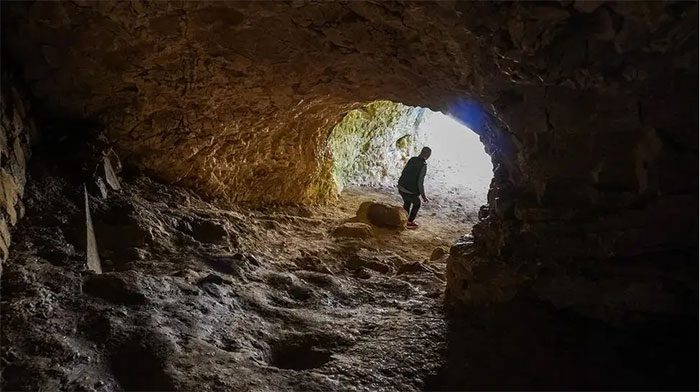A “ghost” that still haunts humanity today may be the reason our ancient ancestors – the Neanderthals – went extinct.
In a study published in the scientific journal Mycobacterium tuberculosis, a research team led by Dr. György Pálfi from the University of Szeged (Hungary) revealed they analyzed the DNA of two Neanderthal specimens discovered in the Subalyuk Cave in the Bükk Mountains of northern Hungary.
These two skeletons, dated to be between 33,000 and 38,000 years old, have become the first evidence of tuberculosis in Neanderthals.

Subalyuk Cave, where two Neanderthal skeletons were found – (Photo: LIVE SCIENCE).
According to Live Science, the Neanderthal fossils were discovered in 1932, but it is only now, with modern techniques, that scientists have come to understand them: They did not die at the same time.
The first skeleton belonged to a 3-4-year-old child who died approximately 33,000-34,000 years ago.
The second skeleton is that of a mature female who died around 37,000-38,000 years ago.
This time difference further emphasizes the fact that tuberculosis may have overwhelmed the Neanderthal population in what is now Hungary for thousands of years, possibly throughout Central Europe.
Evidence of the disease was revealed through various methods, not only through DNA evidence of the tuberculosis bacteria but also through other biomarker tracing methods. Moreover, the skeletons showed signs of severe damage from tuberculosis.
Even more concerning, the dating of the two skeletons falls within a period of declining Neanderthal populations, leading to their extinction.
Previously, evidence of tuberculosis had been found in large animals across ancient Europe.
As a skilled “hunter-gatherer,” it is possible that Neanderthals contracted the disease from these animals, bringing death to their own lineage.
It is likely that our species, Homo sapiens, also contracted the disease in this manner or from Neanderthals, as the two species have been shown to have interbred: Most of today’s population still carries about 2% Neanderthal DNA!
Tuberculosis remains a significant threat to public health today, even though the tuberculosis vaccine has been widely available since the last century.
Therefore, scientists suggest that it cannot be ruled out that tuberculosis was a major factor in the dramatic decline of Neanderthal populations and their eventual extinction, or at least contributed to it.


















































